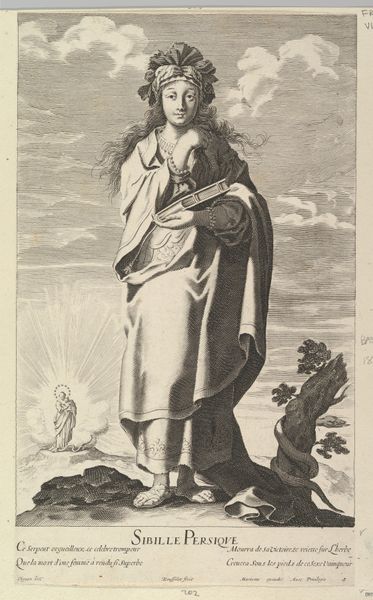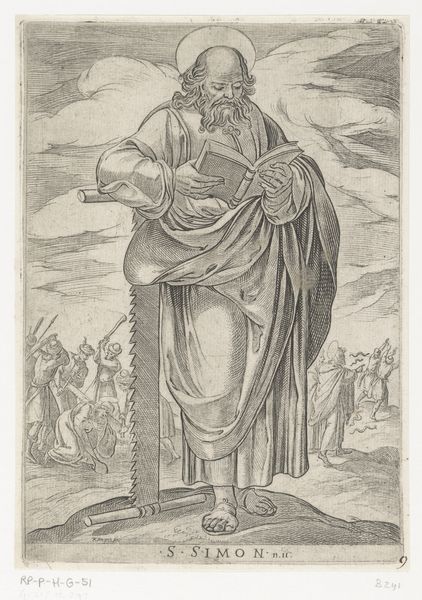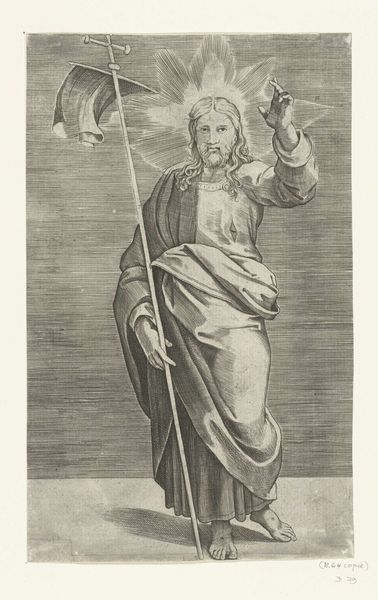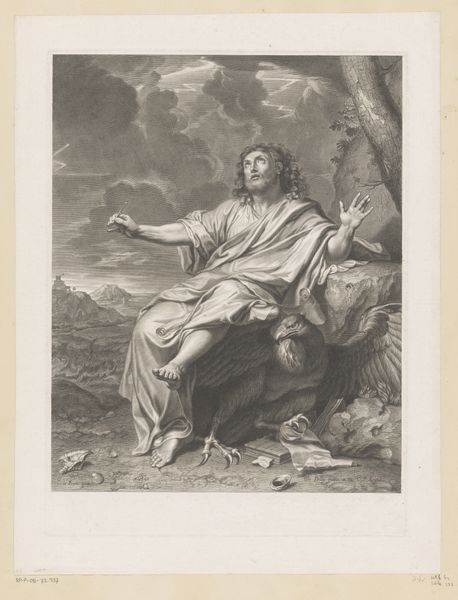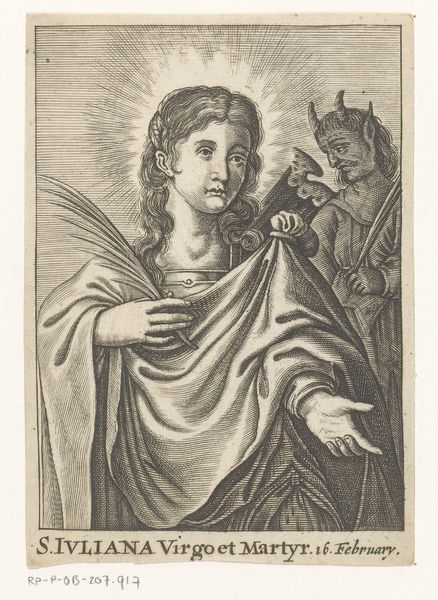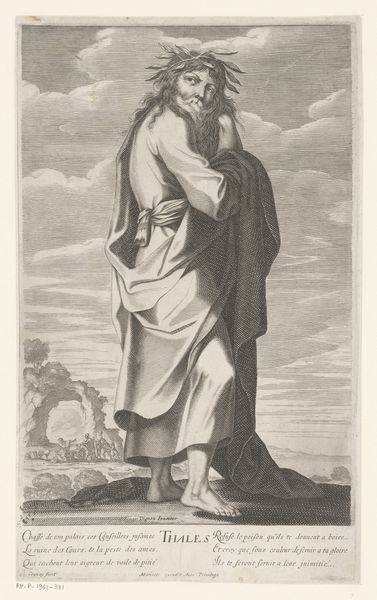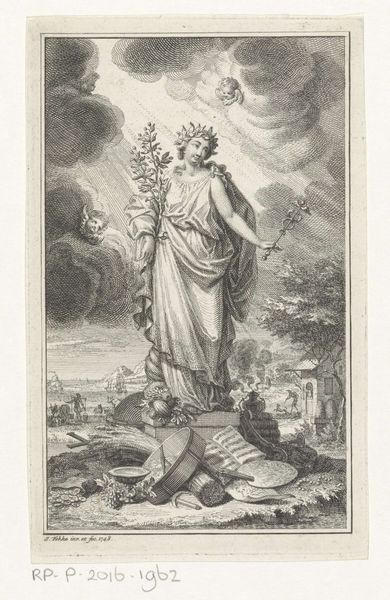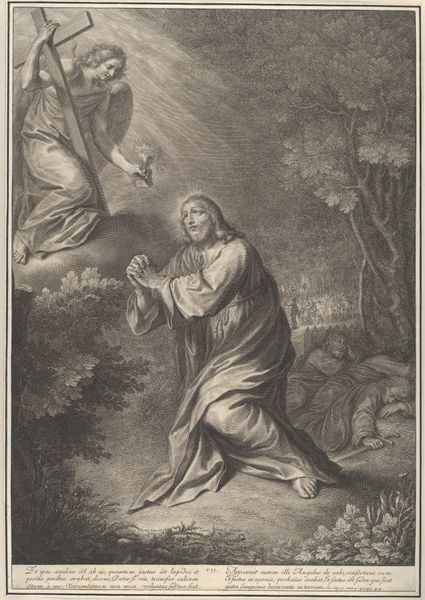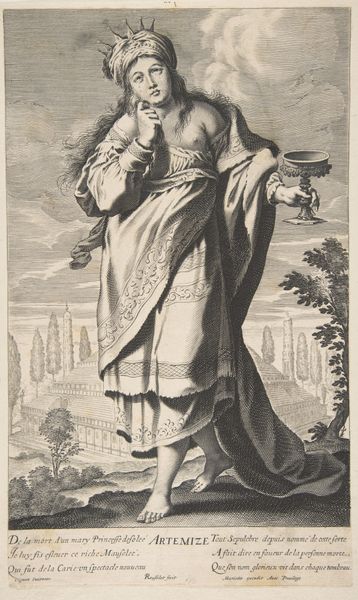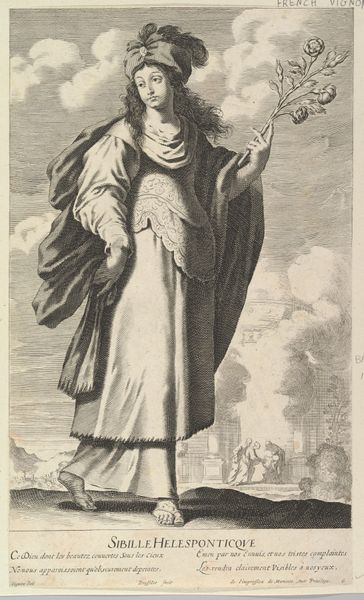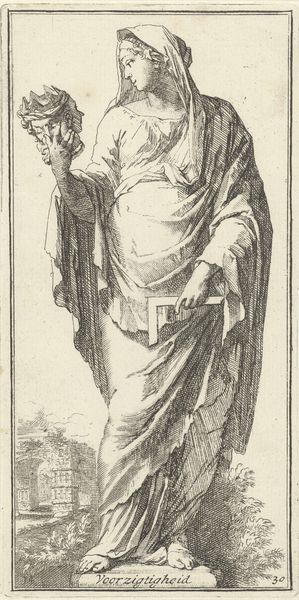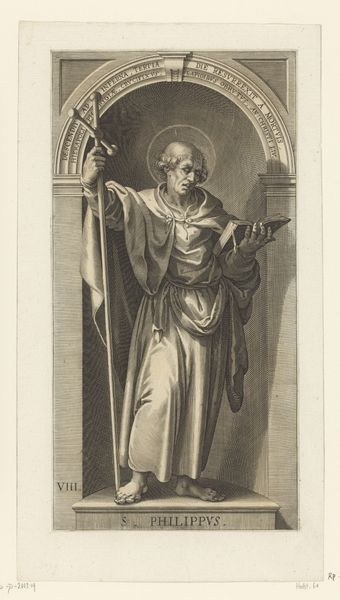
engraving
#
baroque
#
old engraving style
#
landscape
#
figuration
#
pencil drawing
#
history-painting
#
engraving
Dimensions: height 171 mm, width 106 mm
Copyright: Rijks Museum: Open Domain
Gilles Rousselet made this engraving, "Christus in de wildernis," in the 17th century, using a technique that demanded meticulous skill. The process of engraving involves cutting lines into a metal plate, typically copper, which then holds ink to be transferred onto paper. Notice the density of the lines that create the image. The artist used a tool called a burin to physically carve the image into the metal. The varying thickness and proximity of these lines create the illusion of shadow, depth, and texture. Engraving was a highly valued skill, essential for reproducing images and disseminating information widely in early modern Europe. The engraver was a kind of technician, but they were also an interpreter. The engraver had to be able to translate a design into a new language of pure line. Considering this work, we see how it represents a fusion of craft and artistic expression, offering insight into the cultural values placed on skilled handwork and the reproduction of images in Rousselet's time. This intricate process elevates the print beyond mere reproduction, making it a significant work of art in its own right.
Comments
No comments
Be the first to comment and join the conversation on the ultimate creative platform.
